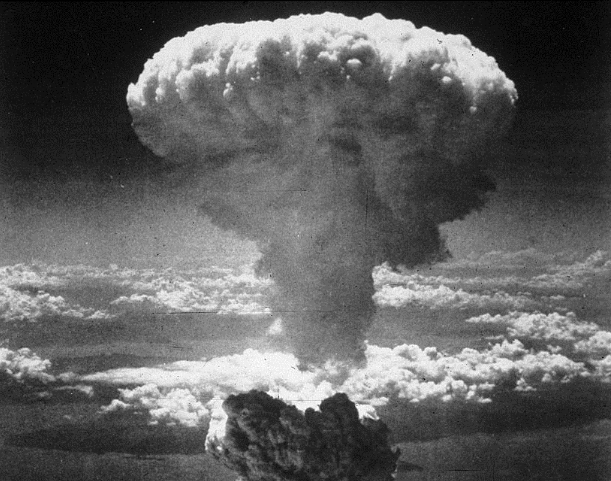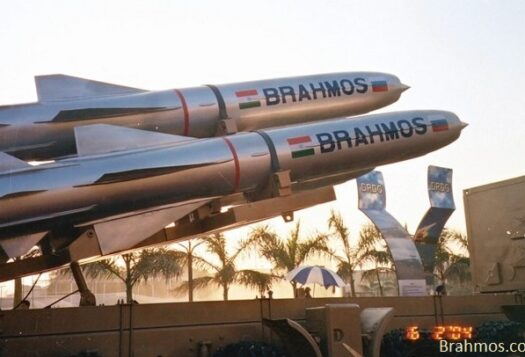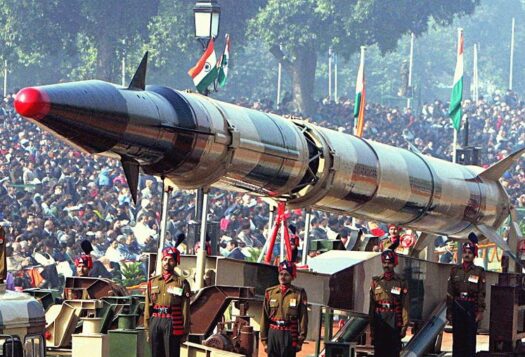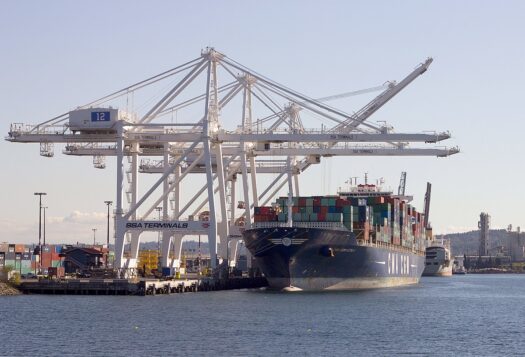
The reality of nuclear weapons came into existence after the acceleration of atomic bomb development in the twentieth century, which brought a new age of warfare and a new technique of military engagement between two or more nations. Although the basic reason for war remained the same (from access to water resources to territorial conflicts), the point where resolution was possible changed. Earlier battles were fought on a field or in a conflict zone. This was a sector far away from the general public, where militaries could fight each other until a peace agreement was signed (a point where normalisation of the situation would be achieved). Following the conflict, the two nations would go back to their peaceful lives.
However, with the coming of nuclear weapons and their proliferation in the international system, the previous system of warfare altered. It is true that previous technological advancements and weaponry over the years had proved to be quite deadly, such as the use of tanks and poison gas during WWI, but risk posed by nuclear weapons exceeds previous advances and the potential death toll has increased exponentially. The nature of the nuclear bomb has to be understood – it does not differentiate whether a person is wearing a military uniform or not. Many argue that there are modern weapons that kill people immediately, such as UAVs (or drones) and cluster bombs. However, the threat of nuclear weapons – the magnitude and radius of a nuclear explosion and its ramifications for the international community – completely overshadows these other threats. Additionally, nuclear radiation and distortion leaves a permanent scar on an entire generation, and on the land where the bomb was dropped, creating a very difficult clean up task for future generations.
Nuclear weapons arsenals in India and Pakistan will create a dangerous atmosphere should tensions between the two nations increase, as the two nations have maintained a notoriously poor relationship since partition. Despite efforts from the United States and the international community to ease tensions, the relationship between the two nations has not significantly improved. The two nations have fought each other four times—in 1947, 1965, 1971, and 1999. Additionally, significant border skirmishes and stand offs have resulted in a rocky relationship between the two. Both countries are equipped with nuclear capabilities. India announced its nuclear development with “Smiling Buddha” in 1974; Pakistan followed.
India-Pakistan Relations
Gaining freedom from the British Raj in 1947, the nations of Pakistan and India share a long relationship of suspicion and aggression. As mentioned previously, they have fought three official wars, one unofficial war, and many border skirmishers. Out of all these conflicts, the most prominent ones are the partition of British India, the ongoing Kashmir conflict, and the ongoing issue of terrorism. In post-imperial nations, the formation of a new leadership is easier said than done. When Britain partitioned India and divided it into two dominions, India and Pakistan, roughly 12.5 million were displaced, and there were as many as one million deaths. Partition created tough feelings on both sides, and relations have been sore ever since. Furthermore, the issue of Kashmir offers another debate in the international arena. Today, both nations claim ownership over the region and have fought repeatedly with one another over the land; Kashmir was the central issue in the Indo-Pakistani wars of 1947, 1965, and 1999. In addition to the violence, the conflict has been one of the most heated discussions in the international arena. The wars will never stop if the issue is left unresolved.
In 1974, India tested its first nuclear device (Smiling Buddha). In response, Pakistan accelerated its program and tested its first nuke, Chagai-I, in 1998, thereby changing nuclear dynamics. India and Pakistan fought skirmishes along the border following the 1998 tests, which increased the possibility of a full-fledged war between the two.
Despite a troubled past, many thought there remained some hope, but it too died out early. The United Nations Commission for India and Pakistan (UNCIP) was created in 1948 to investigate the issue of Jammu and Kashmir. In an effort to normalise the situation, the Simla Agreement was signed in 1972. Trade flourished between the two nations, while information and technology sectors were discussed between the two. It is not wrong to say that nuclear weapons can make or break the India-Pakistan conflict. On one hand, the presence of nuclear weapons could bring the nations to the discussion table, but on the other hand it could bring them on the verge of destruction. The past has been decided. What shall be the future? This is a question both nations have to answer.
Actions and Inactions
The two nations have focused on nothing but national security, as friendship between the two depleted gradually. For the international community, punishing one and sparing the other will be biased. Furthermore, acting quite harshly would put both nations in a situation of no return, especially if they believe that no nation is sympathetic to the conflict. Hence a response from the international community is very important. The United Nations has been quite serious with respect to this conflict. The Karachi Agreement was signed between the two dominions in 1949, establishing Kashmir as a part of the internationally supervised region, with no country holding authority. These observers later came to be known as the United Nations Military Observer Group in India and Pakistan (UNMOGIP), and were tasked with keeping peace in the region. Since the formation of UNMOGIP, the Security Council has not discussed the issue at length; the only issue that was discussed during this time was in 1965, when the ceasefire was violated.
Even with the disagreement between the two nations, the United Nations has taken a firm stand in countering the proliferation of nuclear weapons. Albeit with some rogue nations, many countries have agreed to eliminate the proliferation of nuclear weapons and nuclear stockpiles. One such treaty is the Non-Proliferation Treaty. The United Nations understands the use of nuclear technology for domestic purposes but opposes weapons and uranium enrichment programs. However, every nation has a responsibility towards their own citizens in the matters of national security and national interest. Hence, no matter what decisions are made by this body, countries act depending upon their own agendas, needs, and interests.
Actions are threatening, but inaction is more dangerous still. Inaction leaves dilemmas unresolved in the international arena. If the international community becomes complacent, then a conflict might change its nature for the worse. Today, only India possesses a second strike capability, but as time passes Pakistan will invariably aim to acquire this too. The international community should intervene at this point, before Pakistan develops its second strike capability and stability worsens in the region.
Inaction is another word for ignorance; if the international community does nothing, soon it will escalate into another form or reach a point of no return. Even with many associated issues, such as the issue of Kashmir or partition, the issue is not unsolvable. Resolving the issue will definitely benefit the international community as a whole because the two nations provide most of the peacekeepers to the United Nations Peacekeeping Force (UNPKF) and assist in most of the UN’s peacebuilding missions. It would be a landmark for the issue to be resolved, as both nations could then devote their resources to other affairs. A lasting peace between Pakistan and India—the two countries that share linguistic, cultural, and geographic links—will be an overwhelming achievement for the international order and global peace.
***
Image: Keystone-MPI, Getty


